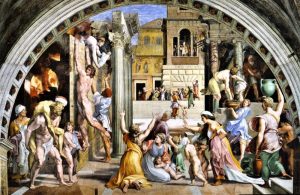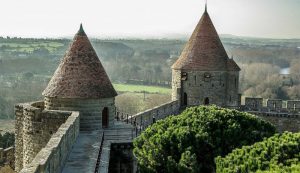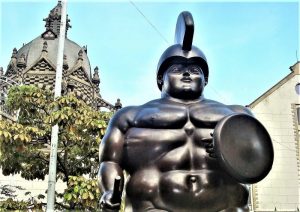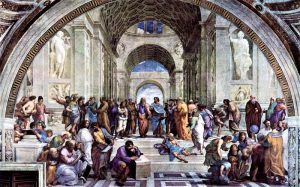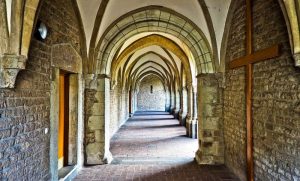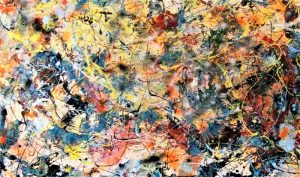Francisco Goya
Francisco Goya has been considered the most important Spanish artist who emerged in the late eighteenth and early nineteenth centuries. In the course of his long career, Goya went from being a cheerful and carefree artist to a pessimist, which he often expressed in his paintings, drawings and frescoes. He was a great war survivor and became deaf some time later. He was a great man of wisdom, lucid and direct. He was a painter and a solitary prophet. Sometimes, he was called the father of modern art. This famed Spanish artist painted a series of royal portraits as well as more subversive works in the late 1700s and early 1800s.
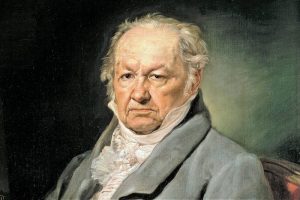
Personal information
- Born: 30/03/1746
- Where he was born: Fuendetodos, Spain
- When did he die: 16/04/1828
- Where he died: Bordeaux, France
Who was Francisco Goya?
Francisco José de Goya y Lucientes was one of the most important Spanish artists of the time, happy and carefree at first, he ended up reflecting in his works the pessimism in which he ended up living.
Biography of Francisco Goya
Francisco Goya was born on March 30, 1746 in Fuendetodos, Spain. He began his art studies when he was only a teenager and even spent time in Rome, Italy, to improve his artistic skills. In 1770, Francisco Goya began working for the Spanish royal court. He also created a series of portraits commissioned by the nobility, as well as different works of art that criticized the social and political problems of his time.
Son of a florin, Goya spent part of his youth in Zaragoza. There, he began to study painting when he was about fourteen years old. He was José Luzán Martínez’s pupil and at the beginning of his career, Goya learned by imitation. He copied the works of great masters, taking inspiration from the works of artists such as Diego Rodríguez de Silva y Velázquez and Rembrandt van Rijn. Later, Goya moved to Madrid, where he went to work with the brothers Francisco and Ramón Bayeu and Subías in their arts studio. He sought to promote his artistic education in 1770 or 1771 by travelling to Italy. In Rome, Goya studied the classics and presented a painting in a competition organized by the Academy of Fine Arts of Parma, however, although the judges liked his work, he could not win the first prize.
Thanks to the German artist Anton Raphael Mengs, he began to create works for Spain’s royal family. First he painted cartoons of tapestries, which were artworks that served as models for woven tapestries, for a factory in Madrid and that reflected everyday scenes. In 1792, he became completely deaf after suffering from an illness for which no records are kept and began working on unpaid paintings during his recovery. The political climate became so tense that Goya voluntarily went into exile in 1824. Despite his poor health, Goya thought he might be safer outside of Spain, so he moved to Bordeaux, France, where he spent the rest of his life. During this time, he continued painting. Some of his latest works include portraits of friends who also lived in exile. Francisco Goya died on April 16, 1828, in Bordeaux, France.
Characteristics of Francisco Goya
Among his most outstanding characteristics, we can mention the following:
- He was a free painter and his style was immersed between neoclassicism, romanticism and realism.
- His painting palette was highly chromatic and suggestive.
- He used different techniques such as fresco, oil, canvas and cardboard for tapestries.
- His themes were based on religious paintings, some costumbrismo scenes of the time in the cartons, historical portraits and still life.
- Light predominated in his works.
- He knew how to capture different psychological traits in his art works.
- He exerted a strong influence on the great painters belonging to the Renaissance and Baroque
Stages
- The first stage was from 1771 to 1807 during his youth, this stage was where he obtained great professional triumphs and his optimistic vision of life dominated his paintings. He began as a painter of the Royal Academy, becoming the portraitist of Madrid society.
- The second stage took place in the years 1808 and 1824, years that were marked by his illness and deafness and by war. At this stage his personal equilibrium was broken, as he had always been an admirer of the French Revolution.
- His epilogue occurs in 1824 when he decides to leave Spain and goes to live in Bordeaux, where he dies.
Outstanding works by Francisco Goya
Among the main works of Francisco Goya we can mention:
- The Three of May (1814)
- The naked Maja (1795)
- The Colossus (1808-1812)
- Charles IV’s family (1800)
- Saturn devouring his son (1819)
- The Coven (1797)
- The Caprices (1799)
The whims
It was a series of 80 different engravings that represented a satire representing Spanish society, mainly the nobility and the clergy. The first half of the work was based on their peers’ behavior and the second half, abandons rationality to present a series of strange engravings. The technique he used was etching and aquatint, deforming the bodies to represent vices and clumsiness.
Saturn devouring his son
It belongs to the series of Black Paintings by Francisco Goya. The painting represents the titan Cronus of Roman mythology when he devours one of his sons. According to some studies, the painting reflects melancholy and destruction. The act of eating the child has been studied and classified as a reflection of sexual impotence.
How to cite this article?
Briceño V., Gabriela. (2019). Francisco Goya. Recovered on 3 May, 2025, de Euston96: https://www.euston96.com/en/francisco-goya/



